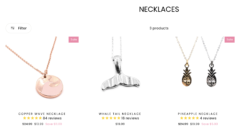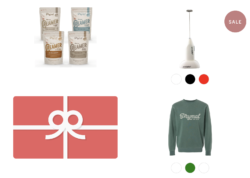Table of Contents
** Minutes
When to consider assortment planning
How to get started with assortment planning
Assortment planning optimization
Every ecommerce business is concerned with profitability — and in order to be profitable, you need to stock the right inventory at the right locations at the right time.
One key way to achieve this is through assortment planning. Through assortment planning, businesses can strategically plan their inventory and manage their catalog around changes in demand and sales volumes throughout the year to satisfy customers and maximize profitability.
In this article, we’ll cover what assortment planning is, when to consider it, how to get started with assortment planning, and how a logistics platform like ShipBob can help you optimize your assortment planning to grow your business.
What is assortment planning?
Assortment planning is the process of choosing which “assortment” of products to sell during a certain time period, and how to allot those products between different locations and/or sales channels to maximize profits.
In other words, assortment planning is about deciding what products to sell and where to sell them based on seasonality and demand at particular locations.
For example, a clothing brand may sell bathing suits and breathable fabrics during summer, but shift to sell fleece jackets and sweaters during the winter.
Or, if one of their retail locations is in a geography that is cold and snowy for most of the year, the company may instead choose to stock that particular location with only jackets.
When to consider assortment planning
Assortment planning may not always be top-of-mind for many ecommerce businesses, especially when you’re turning decent profits. However, assortment planning is a critical part of inventory management — particularly when your business faces the following situations.
Uncontrolled SKU proliferation
While SKU proliferation is an essential part of growth, offering too many SKUs can eat away at your profits. Assortment planning helps you rationalize SKUs, keep inventory proliferation under control, and focus your investments on the most profitable items.
Excessive obsolete inventory
If you’re constantly facing issues with obsolete inventory, it’s a sign that you need better assortment planning. This will help you to plan your inventory investments more accurately, and avoid investing in products that are slow to sell or for which demand is low.
Regular stockouts
Deadstock is an issue, but so is stocking out. If you tend to regularly sell out certain products while demand for them is still high, you should improve your assortment planning so that you don’t have to replenish products as frequently to keep up with sales volume.
Insufficient storage space
As your business scales, you may also run out of space to store all the products that you sell. Assortment planning allows you to strategically plan your inventory around warehouse capacity and shelf space so that you can get the most value out of your square footage.
How to get started with assortment planning
As important as it is to profitability, assortment planning can be a complicated process. Before you begin the process, make sure you have a good grasp of the following assortment planning best practices.
Use data to make informed decisions
Without data, the assortment planning process becomes pure guesswork. This trial and error method is at best inefficient, and at worst harmful to your bottom line.
Data on customer demographics, seasonal trends, and product performance should always be central to your assortment planning efforts, as it can help you make informed and logical decisions about what to stock where and when. Some of the most relevant metrics to track for assortment planning include:
- Inventory turnover rate
- Historical sales data
- Lead times
- Cost per unit for each SKU
- Revenue per unit for each SKU
Set realistic goals
Because customer demand and sales trends are unpredictable, even the most strategic assortment plan can still result in deadstock or stockouts.
Knowing this, your goal should not be to create an assortment plan that perfectly predicts demand; rather, aim to create an effective, actionable plan that fully utilizes the information you have.
Try setting smaller goals, such as optimizing product selection for a single product category, improving sales for one location or sales channel.
Consider improving your supply chain
Your supply chain should be able to support your assortment plan. If you often have to deal with long lead times and limited supplier capacity, or if you intend to start multichannel retailing, you may need to change or improve your supply chain to secure the required product quantities at the correct locations for the right seasons.
Assortment planning examples
There are a few different assortment planning strategies that a business can use. These strategies mainly rely on two factors: depth and width.
Here, width refers to the range of product categories that a business deals in. Depth, on the other hand, refers to the range of product varieties within each category.
Different businesses may rely on assortment models of different widths and lengths to maintain customer satisfaction and sell more goods.Here are some examples of some common assortment models.
Wide assortment
Businesses with a wide product assortment sell many different categories of products, but product variety within each category is limited.
For example, marine life advocacy brand Ocean & Co. sells many different categories of products, including bracelets, necklaces, rings, t-shirts, hoodies, bags, mugs, and stickers. However, the brand only offers a few options for each product type (such as 3 necklace designs).

Deep assortment
Deep assortments are the inverse of wide assortments. Deep assortments offer very few product categories, but within a category there are many different product varieties.
For instance, Touchland, sells hand sanitizer mists but offers 15 different scents for customers to choose from.

Scrambled assortment
When a business has a scrambled assortment, its product line branches out to include products outside of the core categories that it once offered.
Prymal, for example, started out with 1 product: a sugar-free, non-dairy creamer. However, it soon began offering products of other categories, including coffee beans, utensils, and apparel.

Localized assortment
This involves diversifying your product mix based on the needs and preferences of customers in different regions. For example, Ikea China may have decorative accessories inspired by Chinese New Year around that holiday, whereas those items may not be available on the Ikea India website.
Mass-market assortment
This involves appealing to the mass market by offering as many product categories as possible and a deep selection of items in each category. Amazon, Walmart, and Target use this assortment planning strategy.
Assortment planning optimization
Assortment planning isn’t a one-time activity. If you want to continue maximizing profits and adapting to shifts in demand, your business needs to constantly reevaluate its assortment strategy. Here are some tips for optimizing your assortment planning time after time.
Find the right balance between evergreen and seasonal products
While seasonal trends play a huge role in assortment planning, that doesn’t mean you should only carry seasonal products (however profitable they are). You should have a mix of both seasonal and evergreen (i.e. consistently offered) products to maximum profitability.
That said, experiment with carrying different proportions of evergreen and seasonal items. Occasionally reassess which seasonal items are popular enough to become evergreen, and which evergreen products should be taken down to seasonal specials or retired.
Leverage cross-merchandising
Cross-merchandising involves stocking and/or displaying complementary products to boost your sales.
If you know two or more products are usually bought together (such as paint and paintbrushes), make sure to carry both in your inventory and sell them in the same locations or channels.
When a customer views a certain product page, you could even display recommended products or “people also bought” suggestions to increase their chances of buying those items.
Understand omnichannel market trends
If you’re selling through multiple channels, make the most of omnichannel order management software to analyze customer behavior and sales data across all these channels.
This will provide you with increased visibility into actual customer demand and product performance so you can get more accurate demand forecasting.
Optimize your localization efforts
Localization helps you to optimize your product mix to appeal specifically to customer demographics in different regions. Store clustering — that is, grouping stores into segments based on factors like store size, customer needs — is an easy way to localize retail assortment.
While this should be an important focus in your assortment planning process, make sure you’re not overlooking the implications of localization for your retail logistics (e.g., you would need to optimize your retail warehousing strategy to make sure that the right products are stored in the appropriate locations to streamline the fulfillment and shipping process).
Leveraging the distributed fulfillment network of a 3PL like ShipBob is a great solution for localization without the complexity. You can use ShipBob’s software to understand the ideal inventory distribution ratio for your products, and ShipBob will store your inventory accordingly across our multiple fulfillment centers.
Update your assortment planning technology
While traditional tools like excel spreadsheets can work, they make assortment planning more time-consuming and confusing than they have to be. Up-to-date software can modernize and streamline the process.
Consider implementing an assortment planning solution. To plan retail assortment on an even more granular level, try using a planogram software to improve visual merchandising.
ShipBob and the assortment management process
With powerful proprietary software and ecommerce fulfillment services, a logistics platform like ShipBob can help you simplify and optimize your assortment planning process.
ShipBob’s analytics tool offers the data tracking and insights you need to forecast customer demand and plan your assortment accordingly. With ShipBob’s analytics, you can analyze popular order destinations to optimize inventory allocation, track inventory turnover and sales histories, and better plan for holidays and peak shipping seasons.
Every merchant’s dashboard also provides inventory management capabilities to make assortment planning easier, including:
- Real-timevisibility into inventory movement down to the SKU level
- Automatic notifications when you hit reorder points to help you time replenishment
- Ideal inventory distribution analysis between our dozens of local and international fulfillment centers
- Inventory tracking, including SKU performance over time
Perhaps most importantly, ShipBob gives you the time you need to plan your assortment by handling order fulfillment and shipping for you.
Changes in consumer demand are inevitable — but with ShipBob as your logistics provider, you can enable your business to plan a winning assortment that delights your customers and maximizes profits.
Retail warehousing FAQs
Here are answers to the most common questions about retail warehousing.
Why is assortment planning important?
Assortment planning allows you to optimize your inventory selections, placement, and seasonal offerings for better profitability.
Is assortment planning the same as merchandise planning?
While the two terms are often used interchangeably, assortment planning is slightly different from merchandise planning. Merchandise planning involves creating a higher-level strategy without looking at inventory at the product-level. Assortment planning involves getting into specifics to decide which assortment of products should be sold when and where.



